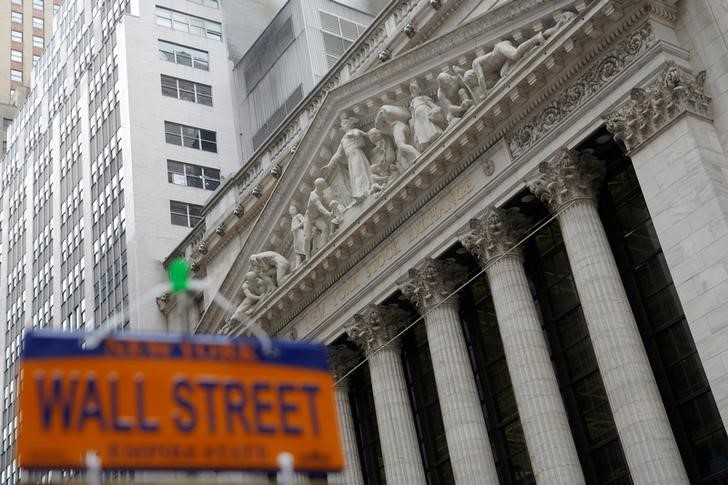(Bloomberg) -- Pockets of Wall Street are raising the possibility that the Federal Reserve could go to extreme lengths on Wednesday in an attempt to control the hottest US inflation in four decades.
While the consensus expectation for the US central bank’s interest rate increase at this week’s meeting is a half-percentage point, higher than expected consumer price index data last Friday prompted two banks, Barclays (LON:BARC) and Jefferies, to revise their calls for the potential of 75 basis points.
Now, some are suggesting a full-percentage hike is on the table.
“The Fed’s trying to erase any perception that they’re behind the curve,” said Steven Englander, global head of G-10 FX research at Standard Chartered (OTC:SCBFF) Bank. “Fifty was the big round number six months ago. Meanwhile, 75 is a very middling type of hike. So the Fed might say: ‘Look, if we want to show commitment, let’s just do 100.’”
As the Fed attempts to bolster its credibility on inflation, it could reach for a more drastic increase if it’s compelled to demonstrate a “Volcker moment,” Englander said. He was referring to Fed Chairman Paul Volcker, who crushed inflation with a series of historic rate increases, starting in 1979. With that possibility, Englander predicts there’s a 10% chance of a 100-basis-point increase at the Wednesday meeting, with his baseline still a half-percentage point increase.
Fed-dated swaps are now pricing in one 75-basis-point move over the next three policy meetings, up from less than three 50-basis- point moves priced before Friday’s inflation data. Around 57 basis points are now priced into Wednesday’s decision, or 28% chance of a 75 basis point move. Further out, the terminal rate is now peaking just below 4% level by the middle of next year, up from 3.35% before CPI data.
That’s prompted a wave of new bets against short-term Treasuries on expectation for higher yields.
The topic of inflation has become all-consuming. “Amazingly enough, I don’t even remember this being the case in the 70s,” Englander recalled. “Inflation is all anybody talks about these days.” The pandemic and the Ukraine war, he added, have all but evaporated from conversations about the economy. “The only issue is inflation.”
Once the extreme, 50 basis points has now become the expectation. “The Fed has been remarkably successful in having 50 the baseline,” Englander said. “Fifty was the neutron bomb even six months ago.”
Yet to some economists, the odds that the Fed opts for an 100- basis-point hike remain very low. “I’d say even a 1% chance might be generous,” said Jonathan Millar, an economist for Barclays, who is on the team of the bank’s strategists who revised his forecast to 75 points on Friday.
With inflation pressures still largely spurred by supply shocks -- as opposed to an out-right spiral -- the Fed won’t likely be moved to “kill the economy” to stop it, according to Millar. Even so, a three-quarter percentage point hike is Barclays’ baseline for the Wednesday meeting.
“They already signaled they would do 50 in June and July, so deviating from that would indicate they are panicking,” said Philip Marey, senior US strategist at Rabobank. He’s expecting 50 basis points for Wednesday.
At the same time, bond markets are also flashing fears that this aggressive tightening will weigh on economic growth down the line. On Monday, a closely-watched part of the US yield curve inverted on growing concern that more aggressive rate hikes will take a bigger toll on economic growth. A record low reading in consumer confidence on Friday hasn’t helped the growth outlook either.
The risk is if the Fed goes too far in hiking, which could cause an “abrupt slowing that requires an about face,” Englander said. “It’s worse to look as if you have to backtrack, or have that speculation emerge at all. Slow and steady often works better.”
©2022 Bloomberg L.P.
